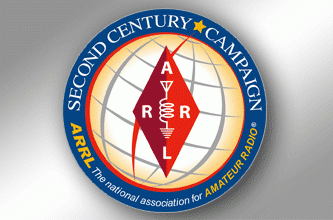
The first 100 years
of Amateur Radio (and the
American Radio Relay League - ARRL) is now
history. The National Centennial Convention closed that chapter
yesterday in Hartford CT. The second chapter is slowly opening.
The League put on a
great conference in the
Connecticut Convention Center; a fine venue
in an interesting city. If you hiked around the newly developed
riverfront, you would come to the the
Old State House and a lively
street scene. Great food and music!
There is an
occupational hazard in ham radio and the ARRL. We sometimes focus
too much on how we got here – our 100 year history – and not so
much on where we are going. A lot of us are old-timers with
nostalgic thoughts about how we got into the hobby long ago, our
first rigs, the controversies along the way, "Rotten QRM"
and so on.
Conference
presentations did try to look ahead. Craig Fugate KK4INZ, FEMA
Administrator, gave a compelling view of Amateur Radio as a vital
backup emergency service "when all else fails". The
challenge is to go back to the future – to be sure you can
communicate when the public telephone and data networks are
completely off-line. High technology comm. systems have proven to be
surprisingly brittle, just when you need them most. It was amazing
to receive that kind of endorsement, personal and professional, from
a high place in government.
Joe Taylor K1JT gave
another keynote talk that was billed as future-oriented. Joe is a
friend who is well-known as the driving force behind the WSJT weak
signal communications software, a physicist and astronomer, a regular
guy, and, yes, a Nobel Laureate. Even K1JT's "futures"
talk was heavily biographical and historical, describing a moving
personal journey that brought the audience to its feet.
Both Fugate and
Taylor were given well-deserved ARRL Medals of Honor.
Futures? I found
the forum talk by Frank Lloyd AA7BQ to be the most challenging.
Frank is the guy behind QRZ.com, the well known callsign database and
forum site. From humble beginnings redistributing the early FCC
tape-based callsign data, QRZ has grown into a leading edge
cloud-based Internet service, with a staff of 4 or 5 people. The
site claims to be the number one Amateur Radio web site.
QRZ.com's basic
service is free, but it has a number of subscription services at
prices $20 per year and up. The latest is an on-line logbook service
and accompanying award program. The front-end website for logging
and log analysis looks quite appealing. I expect it will be a
serious competitor with other on-line services like LoTW and eQSL.
What might that mean
for ARRL's future? ARRL still needs to continue to reinvent itself
for the Internet era. Increasingly, ARRL's identity will (and
should) be as an Internet service provider – in addition to the
traditional member service, technical, and regulatory roles. The
League does have its big website (with lots of good content, but lots
of problems, and only a weak forum system) and the LoTW program.
LoTW is widely considered to be security-heavy and user-unfriendly,
aimed at qualifying for ARRL awards, but having little "social
media" orientation. All that said, it does serve an important
role!
One of the problems
for ARRL is finding a new revenue model to support an aggressive
Internet program. The $39 dues are amazingly low, given all the
services that are supported not to mention QST. Many hams are happy
to pay another $39 or more to QRZ.com or similar services. That
should be sending a message to the League.
Transitioning to
digital publications is hard for any print publisher, but it is
necessary. Digital QST is a first step, but it still has too many
limitations that come from the print world. Where is Digital QEX –
and other kinds of digital newsletters or forums on special topics?
That's the big
challenge. The League has to stay relevant on the Internet! Oh, and
on the bands, too. :-)







